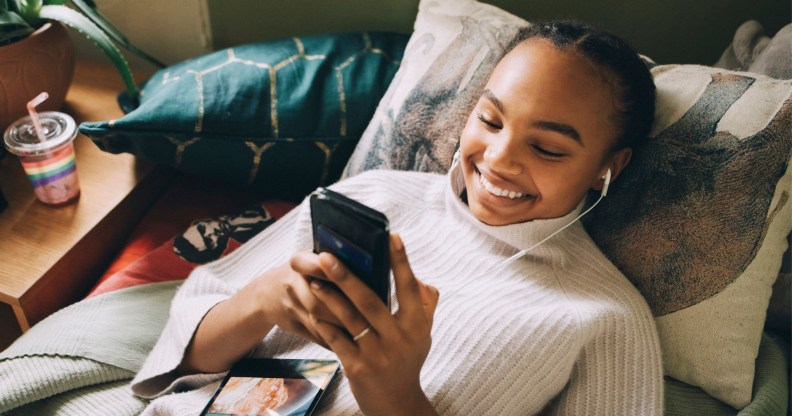There’s a worrying reason why young LGBTQ+ people spend so much time on their phones, study finds

There is a big difference between how queer and straight kids use their mobile phones, according to a new study. (Maskot/Getty Images)
A new study has found that LGBTQ+ youth in the US are spending significantly more time on their mobile phones than straight young people.
The study, published in the Annals of Epidemiology, reveals that queer children aged 10 to 14 are spending an average of four hours more each day looking at screens than straight kids, with LGBTQ+ youth in America racking up an average of 10.4 hours a day on their phones.
It also found that LGBTQ+ children reported higher levels of video game addiction, social media addiction and overall “mobile phone involvement”.
Jason Nagata MD, the study’s author and assistant professor of paediatrics at the University of California, San Francisco, explained that LGBTQ+ kids could be using their phones at higher levels due to “exclusion” from school activities by their peers.
“Lesbian, gay and bisexual adolescents are more likely to experience school-based bullying and exclusion from peer groups due to their sexual orientation, leading them to spend less time in traditional school activities and more time on screens,” he said in a statement.
“Texting and using social media and the internet for virtual communication could be helpful for LGB preteens to find and receive support from other LGB people who may not be available in their local communities.”
He added that this increase in screen time for LGBTQ+ young people could lead to problems with sleep, mental health and physical exercise.
Nagata told Queerty that queer children may have higher levels of screen time than straight children due to finding their community online.
“Queer youth who don’t have support in their local communities may turn to the internet to find and receive the help they need. Screens can also be helpful to stay in touch with friends and family who live far away,” he said.
He also explained that due to the young age of some of the participants, some of those studied who identified as straight could come out as LGBTQ+ at an older age, which could affect the outcomes of the research.
“The percentage of study participants who identify as gay, lesbian or bisexual will likely increase through their teenage years,” he said.
The study follows groundbreaking 2021 census data that found young people in the UK are twice as likely to identify as queer than older generations.
The 2021 census found that the 16 to 24 age group had the highest proportion of lesbian, gay and bisexual people, with 6.91 per cent identifying as LGB.
Dominic Arnall, former CEO of charity Just Like Us, explained that challenges to the LGBTQ+ community, such as bullying and exclusion at school, must be tackled as the community continues to grow.
“Sadly, we know that young LGBTQ+ people face disproportionate challenges, including being twice as likely to face bullying as their straight peers,” Arnall said.
“The census data makes it clearer than ever that issues of bullying must be tackled and that inclusive education should be the norm across the UK, so that the increasing number of openly LGBT+ young people can thrive in schools which are happy, welcoming and safe environments.”
PinkNews has contacted Jason Nagata for further comment.
How did this story make you feel?

